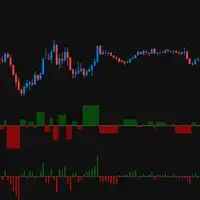
Using Options to Hedge Positions
Methods:
Identify the underlying position that needs to be hedged.
Determine the appropriate options strategy based on the desired level of protection and market conditions.
Calculate the number of options contracts required to offset the risk of the underlying position.
Execute the options trade by buying or selling options contracts.
Monitor the performance of the hedged position and adjust the options strategy as needed.
Applications:
- Options can be used to hedge against adverse price movements in the underlying asset.
- Hedging with options helps mitigate risk and protect capital by providing a degree of insurance against market volatility.
Risk Mitigation Techniques for Volatile Markets
Techniques:
Use stop-loss orders to limit potential losses and protect against sudden market swings.
Diversify the portfolio by investing in different asset classes and sectors to spread risk.
Employ position sizing and risk management techniques to control the amount of capital allocated to each trade.
Consider using options strategies like straddles or strangles to benefit from potential price volatility.
Stay updated on market news and events to anticipate and react to potential market volatility.
Applications:
- Volatile markets pose higher risks, but with proper risk mitigation techniques, traders can navigate and manage the inherent volatility more effectively.
Advanced Binary Options Strategies
Examples:
Straddle Strategy: Simultaneously buying both a call and a put option with the same strike price and expiration date to profit from significant price movements, regardless of the direction.
Butterfly Spread Strategy: Combining multiple options contracts to create a position that benefits from a narrow range of price movement.
Iron Condor Strategy: Constructing a position using both call and put credit spreads to profit from a stable market with limited price movement.
Applications:
- Advanced binary options strategies provide traders with more sophisticated approaches to profit from various market conditions and price scenarios.
Pair Trading and Correlation Analysis
Methods:
Identify two assets with a high correlation or relationship.
Monitor the historical price relationship between the two assets.
Execute the pair trade by taking opposite positions in the assets based on their relative performance.
Manage the pair trade by monitoring the correlation and adjusting positions as the relationship between the assets changes.
Applications:
- Pair trading involves exploiting the price relationship between two correlated assets, aiming to profit from the relative performance between them.
Arbitrage Opportunities in Binary Options
Methods:
Identify price discrepancies or inefficiencies in binary options pricing across different brokers or platforms.
Execute trades simultaneously to take advantage of the price differences.
Monitor trades closely and close positions as soon as the arbitrage opportunity disappears.
Applications:
- Arbitrage opportunities arise when there are pricing discrepancies between binary options across different platforms, allowing traders to profit from these temporary pricing inefficiencies.




